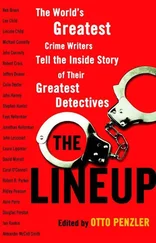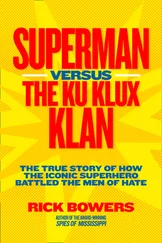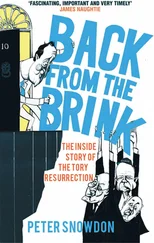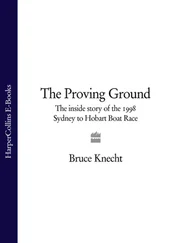Andrew Sorkin - Too Big to Fail - The Inside Story of How Wall Street and Washington Fought to Save the FinancialSystem--and Themselves
Здесь есть возможность читать онлайн «Andrew Sorkin - Too Big to Fail - The Inside Story of How Wall Street and Washington Fought to Save the FinancialSystem--and Themselves» весь текст электронной книги совершенно бесплатно (целиком полную версию без сокращений). В некоторых случаях можно слушать аудио, скачать через торрент в формате fb2 и присутствует краткое содержание. Жанр: Старинная литература, на английском языке. Описание произведения, (предисловие) а так же отзывы посетителей доступны на портале библиотеки ЛибКат.
- Название:Too Big to Fail: The Inside Story of How Wall Street and Washington Fought to Save the FinancialSystem--and Themselves
- Автор:
- Жанр:
- Год:неизвестен
- ISBN:нет данных
- Рейтинг книги:4 / 5. Голосов: 1
-
Избранное:Добавить в избранное
- Отзывы:
-
Ваша оценка:
- 80
- 1
- 2
- 3
- 4
- 5
Too Big to Fail: The Inside Story of How Wall Street and Washington Fought to Save the FinancialSystem--and Themselves: краткое содержание, описание и аннотация
Предлагаем к чтению аннотацию, описание, краткое содержание или предисловие (зависит от того, что написал сам автор книги «Too Big to Fail: The Inside Story of How Wall Street and Washington Fought to Save the FinancialSystem--and Themselves»). Если вы не нашли необходимую информацию о книге — напишите в комментариях, мы постараемся отыскать её.
Too Big to Fail: The Inside Story of How Wall Street and Washington Fought to Save the FinancialSystem--and Themselves — читать онлайн бесплатно полную книгу (весь текст) целиком
Ниже представлен текст книги, разбитый по страницам. Система сохранения места последней прочитанной страницы, позволяет с удобством читать онлайн бесплатно книгу «Too Big to Fail: The Inside Story of How Wall Street and Washington Fought to Save the FinancialSystem--and Themselves», без необходимости каждый раз заново искать на чём Вы остановились. Поставьте закладку, и сможете в любой момент перейти на страницу, на которой закончили чтение.
Интервал:
Закладка:
With all the profits that were being generated, Wall Street was minting a new generation of wealth not seen since the debt-fueled 1980s. Those who worked in the finance industry earned an astounding $53 billion in total compensation in 2007. Goldman Sachs, ranked at the top of the five leading brokerages at the onset of the crisis, accounted for $20 billion of that total, which worked out to more than $661,000 per employee. The company’s chief executive officer, Lloyd Blankfein, alone took home $68 million.
Financial titans believed they were creating more than mere profits, however. They were confident that they had invented a new financial model that could be exported successfully around the globe. “The whole world is moving to the American model of free enterprise and capital markets,” Sandy Weill, the architect of Citigroup, said in the summer of 2007, “Not having American financial institutions that really are at the fulcrum of how these countries are converting to a free-enterprise system would really be a shame.”
But while they were busy evangelizing their financial values and producing these dizzying sums, the big brokerage firms had been bolstering their bets with enormous quantities of debt. Wall Street firms had debt to capital ratios of 32 to 1. When it worked, this strategy worked spectacularly well, validating the industry’s complex models and generating record earnings. When it failed, however, the result was catastrophic.
The Wall Street juggernaut that emerged from the collapse of the dot-com bubble and the post-9/11 downturn was in large part the product of cheap money. The savings glut in Asia, combined with unusually low U.S. interest rates under former Federal Reserve chairman Alan Greenspan (which had been intended to stimulate growth following the 2001 recession), began to flood the world with money.
The crowning example of liquidity run amok was the subprime mortgage market. At the height of the housing bubble, banks were eager to make home loans to nearly anyone capable of signing on the dotted line. With no documentation a prospective buyer could claim a six-figure salary and walk out of a bank with a $500,000 mortgage, topping it off a month later with a home equity line of credit. Naturally, home prices skyrocketed, and in the hottest real estate markets ordinary people turned into speculators, flipping homes and tapping home equity lines to buy SUVs and power boats.
At the time, Wall Street believed fervently that its new financial products—mortgages that had been sliced and diced, or “securitized”—had diluted, if not removed, the risk. Instead of holding on to a loan on their own, the banks split it up into individual pieces and sold those pieces to investors, collecting enormous fees in the process. But whatever might be said about bankers’ behavior during the housing boom, it can’t be denied that these institutions “ate their own cooking”—in fact, they gorged on it, buying mountains of mortgage-backed assets from one another.
But it was the new ultra-interconnectedness among the nation’s financial institutions that posed the biggest risk of all. As a result of the banks owning various slices of these newfangled financial instruments, every firm was now dependent on the others—and many didn’t even know it. If one fell, it could become a series of falling dominoes.
There were, of course, Cassandras in both business and academia who warned that all this financial engineering would end badly. While Professors Nouriel Roubini and Robert J. Shiller have become this generation’s much-heralded doomsayers, even as others made prescient predictions as early as 1994 that went unheeded.
“The sudden failure or abrupt withdrawal from trading of any of these large U.S. dealers could cause liquidity problems in the markets and could also pose risks to others, including federally insured banks and the financial system as a whole,” Charles A. Bowsher, the comptroller general, told a congressional committee after being tasked with studying a developing market known as derivatives. “In some cases intervention has and could result in a financial bailout paid for or guaranteed by taxpayers.”
But when cracks did start to emerge in 2007, many argued even then that subprime loans posed little risk to anyone beyond a few mortgage firms. “The impact on the broader economy and the financial markets of the problems in the subprime markets seems likely to be contained,” Ben S. Bernanke, the chairman of the Federal Reserve, said in testimony before Congress’s Joint Economic Committee in March 2007.
By August 2007, however, the $2 trillion subprime market had collapsed, unleashing a global contagion. Two Bear Stearns hedge funds that made major subprime bets failed, losing $1.6 billion of their investors’ money. BNP Paribas, France’s largest listed bank, briefly suspended customer withdrawals, citing an inability to properly price its book of subprime-related bonds. That was another way of saying they couldn’t find a buyer at any reasonable price.
In some ways Wall Street was undone by its own smarts, as the very complexity of mortgage-backed securities meant that almost no one was able to figure out how to price them in a declining market. (As of this writing, the experts are still struggling to figure out exactly what these assets are worth.) Without a price the market was paralyzed. And without access to capital, Wall Street simply could not function.
Bear Stearns, the weakest and most highly leveraged of the Big Five, was the first to fall. But everyone knew that even the strongest of banks could not withstand a full-blown investor panic, which meant that no one felt safe and no one was sure who else on the Street could be next.
It was this sense of utter uncertainty—the feeling Dimon expressed in his shocking list of potential casualties during his conference call—that made the crisis a once-in-a-lifetime experience for the men who ran these firms and the bureaucrats who regulated them. Until that autumn in 2008, they had only experienced contained crises. Firms and investors took their lumps and moved on. In fact, the ones who maintained their equilibrium and bet that things would soon improve were those who generally profited the most. This credit crisis was different. Wall Street and Washington had to improvise.
In retrospect, this bubble, like all bubbles, was an example of what, in his classic 1841 book, Scottish author Charles Mackay called “Extraordinary Popular Delusions and the Madness of Crowds.” Instead of giving birth to a brave new world of riskless investments, the banks actually created a risk to the entire financial system.
But this book isn’t so much about the theoretical as it is about real people, the reality behind the scenes, in New York, Washington, and overseas—in the offices, homes, and minds of the handful of people who controlled the economy’s fate—during the critical months after Monday, March 17, 2008, when JP Morgan agreed to absorb Bear Stearns and when United States government officials eventually determined that it was necessary to undertake the largest public intervention in the nation’s economic history.
For the past decade I have covered Wall Street and deal making for the New York Times and have been fortunate to do so during a period that has seen any number of remarkable developments in the American economy. But never have I witnessed such fundamental and dramatic changes in business paradigms and the spectacular self-destruction of storied institutions.
This extraordinary time has left us with a giant puzzle—a mystery, really—that still needs to be solved, so we can learn from our mistakes. This book is an effort to begin putting those pieces together.
At its core Too Big to Fail is a chronicle of failure—a failure that brought the world to its knees and raised questions about the very nature of capitalism. It is an intimate portrait of the dedicated and often baffled individuals who struggled—often at great personal sacrifice but just as often for self-preservation—to spare the world and themselves an even more calamitous outcome. It would be comforting to say that all the characters depicted in this book were able to cast aside their own concerns, whether petty or monumental, and join together to prevent the worst from happening. In some cases, they did. But as you’ll see, in making their decisions, they were not immune to the fierce rivalries and power grabs that are part of the long-established cultures on Wall Street and in Washington.
Читать дальшеИнтервал:
Закладка:
Похожие книги на «Too Big to Fail: The Inside Story of How Wall Street and Washington Fought to Save the FinancialSystem--and Themselves»
Представляем Вашему вниманию похожие книги на «Too Big to Fail: The Inside Story of How Wall Street and Washington Fought to Save the FinancialSystem--and Themselves» списком для выбора. Мы отобрали схожую по названию и смыслу литературу в надежде предоставить читателям больше вариантов отыскать новые, интересные, ещё непрочитанные произведения.
Обсуждение, отзывы о книге «Too Big to Fail: The Inside Story of How Wall Street and Washington Fought to Save the FinancialSystem--and Themselves» и просто собственные мнения читателей. Оставьте ваши комментарии, напишите, что Вы думаете о произведении, его смысле или главных героях. Укажите что конкретно понравилось, а что нет, и почему Вы так считаете.












